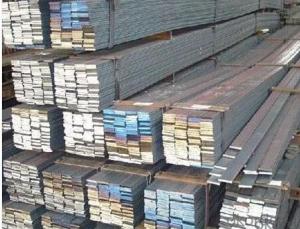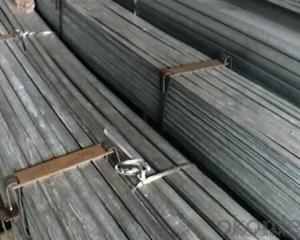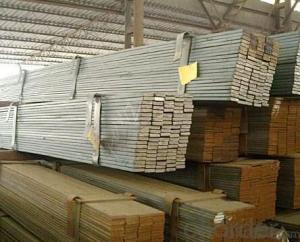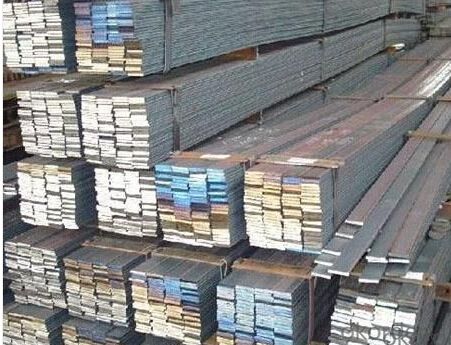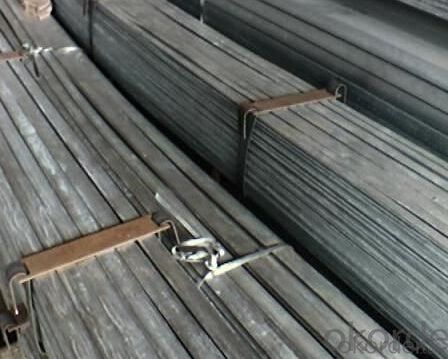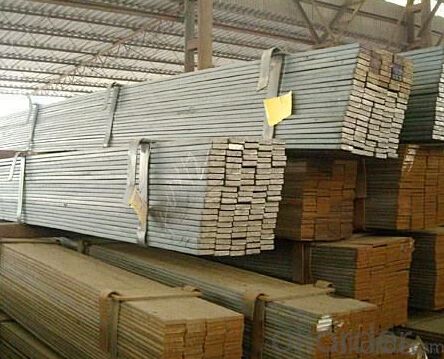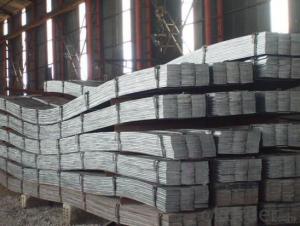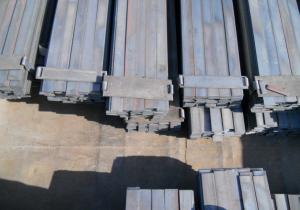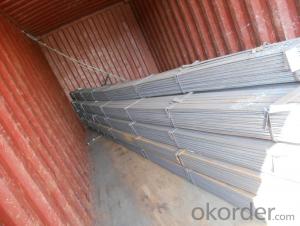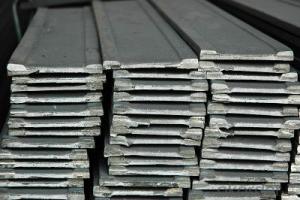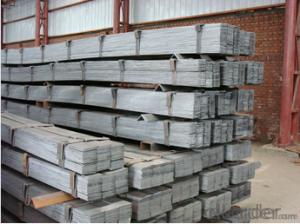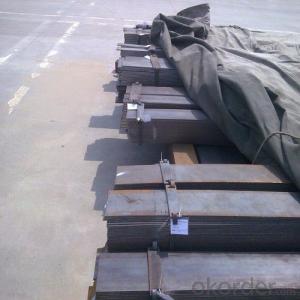Galvanized Flat Bar of Q235 with Leigth 6M/12M
- Loading Port:
- Tianjin
- Payment Terms:
- TT OR LC
- Min Order Qty:
- 50 m.t.
- Supply Capability:
- 1000 m.t./month
OKorder Service Pledge
OKorder Financial Service
You Might Also Like
Product Description:
OKorder is offering Galvanized Flat Bar of Q235 with Leigth 6M/12M at great prices with worldwide shipping. Our supplier is a world-class manufacturer of steel, with our products utilized the world over. OKorder annually supplies products to European, North American and Asian markets. We provide quotations within 24 hours of receiving an inquiry and guarantee competitive prices.
Product Applications:
Galvanized Flat Bar of Q235 with Leigth 6M/12M are ideal for structural applications and are widely used in the construction of buildings and bridges, and the manufacturing, petrochemical, and transportation industries.
Product Advantages:
OKorder's Galvanized Flat Bar of Q235 with Leigth 6M/12M are durable, strong, and resist corrosion.
Main Product Features:
· Premium quality
· Prompt delivery & seaworthy packing (30 days after receiving deposit)
· Corrosion resistance
· Can be recycled and reused
· Mill test certification
· Professional Service
· Competitive pricing
Specifications of Galvanized Flat Bar of Q235 with Leigth 6M/12M
1. Invoicing on theoretical weight or actual weight as customer request
2. Length: 6m, 12m as following table
3. Sizes:
Galvanized Flat Bar Zinc Thickness:15-80μ
Grade: A36, SS400, Q235, Q195
Standard: ASTM, JIS, GB
Thickness:1.5mm-20mm
Width: 10mm-250mm
Width | Thickness | Width | Thickness | Width | Thickness |
(mm) | (mm) | (mm) | (mm) | (mm) | (mm) |
8 | 5-7 | 50 | 5-25 | 200 | 8-40 |
10 | 3-9 | 55 | 5-25 | 220 | 8-40 |
12 | 3-9 | 60 | 5-25 | 250 | 8-40 |
13 | 5-11 | 65 | 5-25 | 260 | 8-40 |
14 | 3-12 | 70 | 5-25 | 270 | 8-40 |
15 | 5-12 | 75 | 5-25 | 280 | 8-40 |
16 | 4-14 | 80 | 6-25 | 290 | 8-40 |
18 | 4-16 | 85 | 6-25 | 300 | 8-40 |
20 | 4-18 | 90 | 6-25 | 310 | 8-40 |
22 | 4-20 | 95 | 6-25 | 320 | 8-40 |
24 | 5-20 | 100 | 6-25 | 330 | 8-40 |
25 | 4-20 | 105 | 6-25 | 340 | 8-40 |
28 | 4-20 | 110 | 6-25 | 350 | 8-40 |
30 | 4-25 | 120 | 7-25 | 360 | 8-40 |
32 | 4-25 | 125 | 7-25 | 370 | 8-40 |
35 | 4-25 | 130 | 8-25 | 380 | 8-40 |
36 | 6-25 | 140 | 8-25 | 390 | 8-40 |
38 | 7-25 | 150 | 8-25 | 400 | 8-40 |
40 | 4-25 | 160 | 8-40 | ||
45 | 4-25 | 180 | 8-40 |
5. Material Specifications:
Production Standard: GB/T 700-2006 | |||||
Grade | Chemical composition (%,max) | ||||
C | Si | Mn | P | S | |
Q195 | 0.12 | 0.30 | 0.50 | 0.035 | 0.040 |
Q235A | 0.22 | 0.35 | 1.40 | 0.045 | 0.050 |
Q235B | 0.20 | 0.35 | 1.40 | 0.045 | 0.045 |
Q235C | 0.17 | 0.35 | 1.40 | 0.040 | 0.040 |
Q235D | 0.17 | 0.35 | 1.40 | 0.035 | 0.035 |
Q235 is similar to ASTMA36,JIS SS400
Usage & Applications of Galvanized Flat Bar of Q235 with Leigth 6M/12M
Widely used for construction,Fabrication , Ship building, Machinery manufacturing, Steel structure
Packaging & Delivery of Galvanized Flat Bar of Q235 with Leigth 6M/12M
1. Packing: it is nude packed in bundles by steel wire rod
2. Bundle weight: not more than 3.5MT for bulk vessel; less than 3 MT for container load
3. Marks:
Color marking: There will be color marking on both end of the bundle for the cargo delivered by bulk vessel. That makes it easily to distinguish at the destination port.
Tag mark: there will be tag mark tied up on the bundles. The information usually including supplier logo and name, product name, made inChina, shipping marks and other information request by the customer.
If loading by container the marking is not needed, but we will prepare it as customer request.
4. Transportation: the goods are delivered by truck from mill to loading port, the maximum quantity can be loaded is around 40MTs by each truck. If the order quantity cannot reach the full truck loaded, the transportation cost per ton will be little higher than full load.
5. Delivered by container or bulk vessel
Production flow of Galvanized Flat Bar of Q235 with Leigth 6M/12M
The process of hot-dip galvanizing results in a metallurgical bond between zinc and steel with a series of distinct iron-zinc alloys. The resulting coated steel can be used in much the same way as uncoated.
A typical hot-dip galvanizing line operates as follows:
Steel is cleaned using a caustic solution. This removes oil/grease, dirt, and paint.
The caustic cleaning solution is rinsed off.
The steel is pickled in an acidic solution to remove mill scale.
The pickling solution is rinsed off.
A flux, often zinc ammonium chloride is applied to the steel to inhibit oxidation of the cleaned surface upon exposure to air. The flux is allowed to dry on the steel and aids in the process of the liquid zinc wetting and adhering to the steel.
The steel is dipped into the molten zinc bath and held there until the temperature of the steel equilibrates with that of the bath.
The steel is cooled in a quench tank to reduce its temperature and inhibit undesirable reactions of the newly formed coating with the atmosphere.
FAQ:
Q1: Why buy Materials & Equipment from OKorder.com?
A1: All products offered byOKorder.com are carefully selected from China's most reliable manufacturing enterprises. Through its ISO certifications, OKorder.com adheres to the highest standards and a commitment to supply chain safety and customer satisfaction.
Q2: How do we guarantee the quality of our products?
A2: We have established an advanced quality management system which conducts strict quality tests at every step, from raw materials to the final product. At the same time, we provide extensive follow-up service assurances as required.
Q3: How soon can we receive the product after purchase?
A3: Within three days of placing an order, we will begin production. The specific shipping date is dependent upon international and government factors, but is typically 7 to 10 workdays.
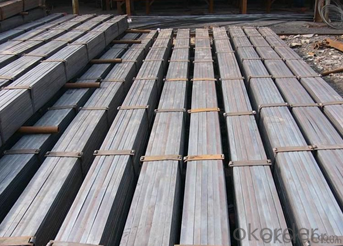
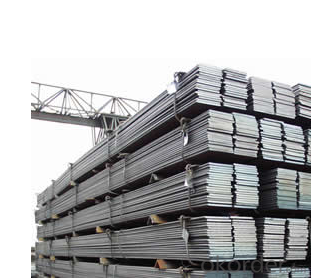
- Q: Can steel billets be used in marine environments?
- Yes, steel billets can be used in marine environments. Steel is a commonly used material for marine applications due to its high strength, durability, and corrosion resistance. Steel billets can be further processed into various marine components such as shipbuilding plates, offshore structures, and marine equipment, making them suitable for use in marine environments.
- Q: What are the different methods of steel billet inspection?
- There are several different methods of steel billet inspection that are commonly used in the manufacturing industry. These methods are employed to ensure the quality and integrity of the steel billets before they are further processed into various end products. Some of the most common methods of steel billet inspection include: 1. Visual Inspection: This is the simplest and most basic method of inspection, where trained inspectors visually examine the billets for any surface defects, such as cracks, pits, or any other irregularities. This method is typically used as an initial screening process before more advanced inspection techniques are employed. 2. Ultrasonic Testing: Ultrasonic testing utilizes high-frequency sound waves to detect any internal defects or inconsistencies within the steel billets. This method involves the use of a transducer that emits sound waves into the billet, and the reflected waves are analyzed to identify any flaws or abnormalities. Ultrasonic testing is effective in detecting internal defects like voids, inclusions, or cracks. 3. Magnetic Particle Inspection: This method is particularly useful for detecting surface and near-surface defects in steel billets. It involves applying a magnetic field to the billet and then applying iron particles to the surface. The particles will cluster around any magnetic leakage caused by surface cracks or defects, making them easily visible to the inspector. 4. Eddy Current Testing: Eddy current testing is a non-destructive method used to detect surface and near-surface defects in conductive materials, including steel billets. It involves passing an alternating current through a coil, creating an electromagnetic field. Any changes in the electromagnetic field caused by defects in the billet's surface are detected and analyzed, allowing for the identification of flaws. 5. X-ray Inspection: X-ray inspection is a widely used method for inspecting steel billets. It involves passing X-rays through the billet and capturing the resulting image on a film or digital detector. This method is highly effective in detecting both internal and external defects, such as cracks, voids, inclusions, or segregation. These are just a few of the commonly employed methods of steel billet inspection. Each method has its advantages and limitations, and the choice of inspection technique depends on factors such as the type of defect being targeted, the size and shape of the billets, and the specific requirements of the end product. By utilizing a combination of these inspection methods, manufacturers can ensure the quality and reliability of the steel billets they produce.
- Q: What are the main factors affecting the electrical conductivity of steel billets?
- The main factors affecting the electrical conductivity of steel billets are the composition and purity of the steel, the presence of impurities and alloying elements, the grain size and structure of the steel, and the temperature at which the billets are being processed.
- Q: How are steel billets used in the production of oil and gas pipelines?
- Steel billets are essential in the production of oil and gas pipelines as they serve as the initial material for manufacturing these pipelines. Essentially, steel billets are semi-finished steel products that typically have a rectangular or square shape. To manufacture oil and gas pipelines, a series of manufacturing processes are performed on the steel billets. Initially, the billets are heated to high temperatures in a furnace in a process known as billet heating. This heating process increases the malleability of the steel, making it easier to shape. Once the desired temperature is reached, the billets are then passed through a series of rollers to transform their shape into a cylindrical form. This process, called hot rolling, further enhances the mechanical properties of the steel, making it stronger and more durable. Following hot rolling, the steel goes through a process known as quenching and tempering. Quenching involves rapidly cooling the steel to increase its hardness, while tempering is a heat treatment process that reduces the brittleness of the steel, making it less prone to cracking. After these processes, the steel billets are welded together to form the final pipeline. This welding process ensures the integrity and strength of the pipeline, enabling it to withstand the high pressures and harsh environments associated with oil and gas transportation. In conclusion, steel billets play a crucial role in the production of oil and gas pipelines. They serve as the foundational material and undergo various manufacturing processes to transform into durable and high-strength pipes that efficiently transport oil and gas over long distances.
- Q: How are steel billets used in the manufacturing of furniture and fixtures?
- Due to their versatility and durability, steel billets are a crucial element in the production of furniture and fixtures. These semi-finished metal products serve as the raw material for manufacturing various furniture and fixture components. One prevalent application of steel billets in furniture manufacturing involves crafting frames and structural supports. These billets are shaped and cut to specific dimensions, forming the framework for chairs, tables, and other furniture pieces. The strength and rigidity of steel make it the preferred choice for ensuring the stability and longevity of these products. Moreover, steel billets are utilized to produce hardware components for furniture and fixtures. These include hinges, locks, drawer slides, and other mechanisms that require strength and precision. By utilizing steel billets, manufacturers can guarantee that these components can withstand the wear and tear associated with daily usage. In addition, steel billets are also employed to create decorative elements in furniture and fixtures. They can be molded, bent, or welded into various shapes and designs, enhancing the aesthetic appeal of the final product. These decorative elements may consist of trimmings, accents, or ornamental details that enhance the overall appearance of furniture and fixtures. Furthermore, steel billets are often used in the manufacturing of fixtures such as shelving units, display racks, and storage systems. The durability and load-bearing capacity of steel make it an ideal material for constructing these items, ensuring that they can withstand heavy loads and provide long-term support. To summarize, steel billets are of utmost importance in the manufacturing of furniture and fixtures. They are used to create frames, hardware components, decorative elements, and various types of fixtures. Their strength, durability, and versatility make them an essential raw material for producing high-quality and long-lasting furniture and fixtures.
- Q: What shape is the billet?
- Steel billet is a product made by steel-making furnace by casting. The billet can be divided into two kinds from the manufacturing process, mould blank and continuous casting billet. At present, the casting process has been basically eliminated.classification
- Q: How are steel billets different from steel bars?
- Steel billets and steel bars are both primary forms of steel, but they differ in terms of their shapes and sizes. Steel billets are typically larger in size and have a square or rectangular cross-section, while steel bars are smaller and have a round, square, or hexagonal cross-section. Billets are raw materials used for further processing, such as forging or rolling, to produce steel bars or other steel products. Conversely, steel bars are the end products that are commonly used in construction, manufacturing, or fabrication applications.
- Q: What are the different types of straightening methods used for steel billets?
- There are several different types of straightening methods used for steel billets, depending on the specific requirements and desired outcome. These methods include: 1. Roller Straightening: This method involves passing the steel billets through a series of rollers that apply pressure in various directions to straighten them. The rollers can be adjusted to apply more pressure on certain areas of the billet that may be bent or twisted. 2. Hydraulic Straightening: In this method, hydraulic presses are used to apply pressure on the billets, either in a single direction or in multiple directions. The pressure can be adjusted to achieve the desired level of straightness. 3. Heat Straightening: Heat straightening is a method that involves applying heat to the bent or twisted areas of the steel billets and then using hydraulic or mechanical tools to straighten them. The heat softens the steel, allowing it to be reshaped more easily. 4. Hammering: Hammering is a traditional method of straightening steel billets, where skilled workers use hammers and anvils to manually reshape the billets. This method requires a high level of skill and precision to achieve the desired straightness. 5. Magnetic Straightening: Magnetic straightening is a non-contact method that uses magnetic fields to apply forces on the steel billets and straighten them. This method is often used for smaller and thinner billets, where other methods may cause damage or distortion. Each of these straightening methods has its own advantages and limitations, and the choice of method depends on factors such as the size and thickness of the billets, the degree of straightness required, and the available equipment and resources.
- Q: How are steel billets used in the production of construction machinery attachments?
- Steel billets are commonly used in the production of construction machinery attachments as they serve as the raw material for manufacturing various components. These billets are shaped and processed through different methods like forging, cutting, and welding to create essential parts such as buckets, blades, booms, and arms. The high strength and durability of steel make it ideal for withstanding the demanding conditions and heavy loads encountered in construction sites.
- Q: Does anyone know how much it costs to refine a ton of steel? What are the expenses involved?
- Electricity, water, wages, raw materials, raw materials loss, charges, oxygen, according to their own circumstances, as well as freight and other expenses,
Send your message to us
Galvanized Flat Bar of Q235 with Leigth 6M/12M
- Loading Port:
- Tianjin
- Payment Terms:
- TT OR LC
- Min Order Qty:
- 50 m.t.
- Supply Capability:
- 1000 m.t./month
OKorder Service Pledge
OKorder Financial Service
Similar products
Hot products
Hot Searches
Related keywords
